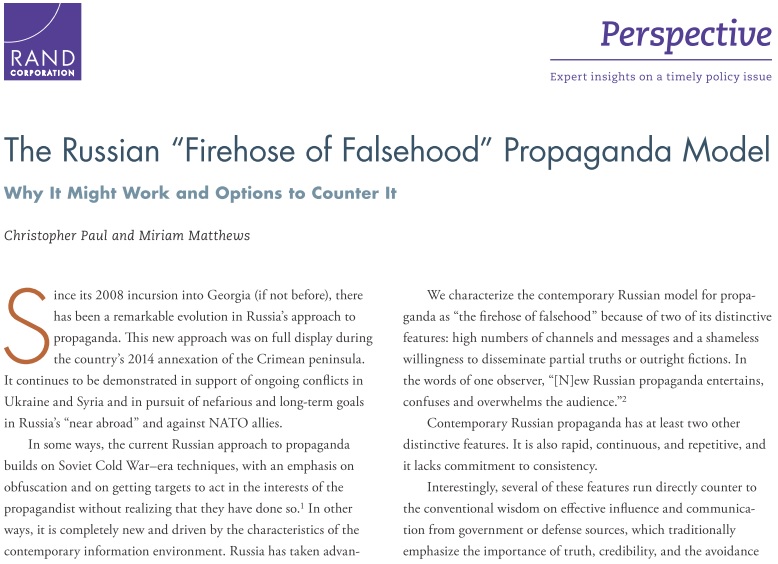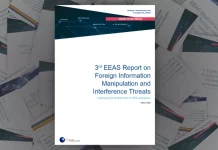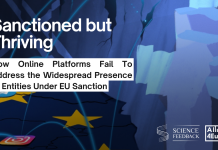Since its 2008 incursion into Georgia (if not before), there has been a remarkable evolution in Russia’s approach to propaganda. The country has effectively employed new dissemination channels and messages in support of its 2014 annexation of the Crimean peninsula, its ongoing involvement in the conflicts in Ukraine and Syria, and its antagonism of NATO allies. The Russian propaganda model is high-volume and multichannel, and it disseminates messages without regard for the truth. It is also rapid, continuous, and repetitive, and it lacks commitment to consistency. Although these techniques would seem to run counter to the received wisdom for successful information campaigns, research in psychology supports many of the most successful aspects of the model. Furthermore, the very factors that make the firehose of falsehood effective also make it difficult to counter. Traditional counterpropaganda approaches will likely be inadequate in this context. More effective solutions can be found in the same psychology literature that explains the surprising success of the Russian propaganda model and its messages.
Research conducted by
Recommendations
- Forewarn audiences of misinformation, or merely reach them first with the truth, rather than retracting or refuting false “facts.”
- Prioritize efforts to counter the effects of Russian propaganda, and focus on guiding the propaganda’s target audience in more productive directions.
- Compete with Russian propaganda. Both the United States and NATO have the potential to prevent Russia from dominating the information environment.
- Increase the flow of information that diminishes the effectiveness of propaganda, and, in the context of active hostilities, attack the means of dissemination.
By Christopher Paul, Miriam Matthews, RAND Corporation
Christopher Paul is a senior social scientist; professor, Pardee RAND Graduate School
Miriam Matthews is a behavioral and social scientist; faculty member, Pardee RAND Graduate School





